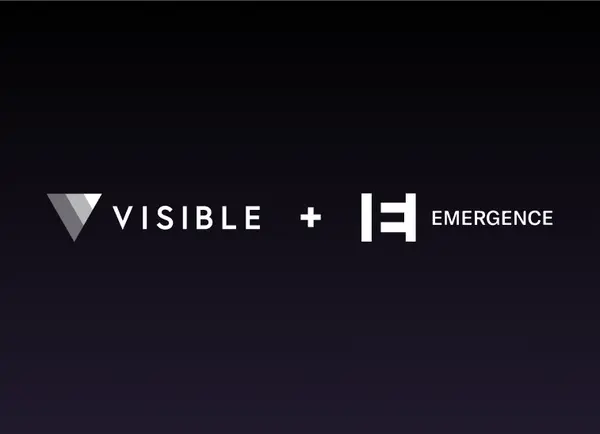Building a startup is incredibly difficult. Leading an early-stage startup can almost feel impossible. On top of building a product, successfully selling and marketing a product, hiring top talent, and more – a founder is responsible for engaging with stakeholders across the board (team members, investors, board members, mentors, etc.)
Related Resource: The Complete Guide to Investor Reporting and Updates
Investors might simply seem like a source of capital. However, they can offer so much more. Investors can offer future capital, their own experience, and network to help move your business forward. It is your responsibility as a founder to have a game plan to place to communicate and leverage your investors.
Learn more about building an investor relationship management plan below.

What is Investor Relationship Management?
As we previously mentioned, investors can offer much more than capital. Venture capitalists and startup investors have likely been operators themselves. They will be able to offer future capital, takeaways from their own experiences (and their other investment experiences), and their own network to help with hiring and finding early customers.
Related Resource: The Complete Guide to Stakeholder Management for Startup Founders
At the end of the day, investors are human and value relationships. It is a founder’s duty to properly communicate with investors and strengthen relationships. While each and every founder <> investor relationship is different, a strong relationship management system looks something like this:
- Monthly investor updates sent via email
- Quarterly board meetings (in person or via Zoom)
- One-off calls and conversations
Related Resource: How to Create a Board Deck (with Template)
Of course, all of these are business-centric meetings so it is important to make sure to build personal relationships along the way. Learn more about the key components and benefits of strong investor relationship management below:
Key Components of Investor Relationship Management
Relationships require work. A founder <> investor relationship is no different. The components of building a relationship with investors will vary from person to person but we generally suggest leveraging the following tools as a backbone for your investor relations.
Related Resource: How to Build a Strong Investor Relations Strategy
1) Monthly Investor Updates
At Visible, we have found that companies that regularly communicate with their investors are 300% more likely to raise follow on funding. A monthly investor update can go a long way when it comes to building relationships with investors.
Related Resource: How To Write the Perfect Investor Update (Tips and Templates)
Monthly updates should take no more than a few minutes of your time and can pay dividends down the road. You’ll be able to regularly surface challenges you are facing to get your investors to help on the fly.
Check out a few popular monthly updates for inspiration below:
- The Visible “Standard” Investor Update Template
- Visible Lite Monthly Update
- Y Combinator Investor Update
Related Resource: How to Write the Perfect Investment Memo

2) Quarterly Board Meetings
Monthly updates are great for keeping investors in the loop and getting their input on the fly. Quarterly board meetings are a great opportunity to look back at the quarter and shape your future roadmap and decisions with your board.
Quarterly board meetings will allow you to sit down with vital stakeholders and spend valuable time digging into future decisions and strategies. However, it is important that you as a founder come to a board meeting well prepared and make the most of the time. We recommend sharing some information beforehand so investors can prepare as well.
3) One-Off Meetings
Monthly investors and quarterly board meetings should be the minimum when it comes to building investor relations. Inevitably there will be conversations and questions that arise that will not fit into either. With that said, it is important that you reach out to individual investors for one-off conversations and meetings as needed.
On top of being an opportunity to tap into a specific investor’s capital, network, experience, etc. a one-off meeting is an opportunity to strengthen your personal relationship with them.
4) Tools and Management
At Visible, we oftentimes compare a fundraise and investor relations to a traditional B2B sales and marketing funnel. At the top of your funnel, you are bringing in new investors (leads), building relationships throughout the middle of the funnel, and closing and delighting them at the bottom of the funnel.
Just as a sales and marketing team has dedicated tools we believe the same should for investor relations. With Visible you can find investors, send monthly Updates, share your pitch deck, and manage relationships with our CRM. Give Visible a free try for 14 days here.
Related Resource: Investor CRM: Seamlessly Manage Relationships and Finances
Related Resource: Why a CRM is Essential for Investor Relations
Related Resource: How to Find Investors
Best Practices: Investor Relationship Management Edition
As we’ve previously mentioned, every founder and investor relationship is different. We find that the stage, geography, focus, etc. might impact how to best communicate and build relationships with investors.
However, there are a few best practices that generally stay consistent from relationship to relationship. Check out a few best practices for managing relationships with investors below:
Include Wins and Losses
First things first, investors need a pulse on how your business is performing so they know where they can best help. We suggest sharing both your wins and losses with investors on a monthly basis.
Sharing wins is easy and investors want to help celebrate your accomplishments. Sharing losses is what differentiates okay from great communication. By being able to be transparent and share things you are struggling with investors will be able to build trust with you and your business and help you work through them.
Share Key Metrics
Investors will also want a quantifiable pulse on your business. Sharing a handful of key metrics is a great way to keep investors in the loop. We always recommend working through the specific metrics with your investors. Once you decide what you are going to share, make sure the metrics you are sharing stay consistent from month to month.
Related Resource: 6 Metrics Every Startup Founder Should Track
Make Asks
Arguably one of the most beneficial parts of sending investor updates is the opportunity to make an asks. Investors likely have been in your shoes before (or are working with other companies in a similar position).
Use this as an opportunity to make targeted asks to tap into their capital, experience, and network. We recommend being as specific as possible and making the job as easy as possible for the investor.
Stay Consistent
Keeping things predictable and consistent from month to month is a great way to strengthen trust with investors. For example, you’ll want to make sure you are calculating metrics the same way from month to month or are sharing your Updates around the same time of the month.
Inconsistencies might trigger a red flag and investors will question if something is going south.
Respond Promptly to Investors
Being responsible can go a long way in any relationship. Be sure to respond to your investors as quickly as possible. Even if you do not have an answer being responsive is a great way to strengthen your relationship.

What is an Investor Relations Strategy?
At the end of the day, investor relations mirror any relationship. By communicating with investors and having a strategy in place, you’ll be able to set yourself up for future success.
Related Resource: 6 Helpful Networking Tips for Connecting With Investors
Manage Your Investor Relationships with the Help of Visible
With Visible you can find investors, send monthly Updates, share your pitch deck, and manage relationships with our CRM. Give Visible a free try for 14 days here.




